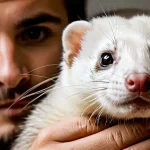Key Forms of Citizen Involvement in UK Wildlife Conservation
Demystifying participation opportunities and their impact
One of the most impactful ways people engage in conservation initiatives is through wildlife volunteering. This hands-on participation often involves helping with habitat restoration, species monitoring, and supporting local conservation projects. Volunteers become the backbone of many on-the-ground efforts, contributing invaluable time and energy to protect native species.
Also to read : How Do UK Wildlife Conservation Efforts Impact Animal Behavior?
Another important avenue is reporting wildlife sightings. When citizens document encounters with animals or plants, they provide essential data used in monitoring schemes. These schemes track population trends and health, informing conservation strategies. Accurate and timely reports enhance understanding of species’ status across the UK.
Crucially, many participants contribute as part of citizen science UK programs. These initiatives encourage public involvement in scientific research, where volunteers collect, analyze, and share data alongside professionals. This collaboration accelerates discovery and strengthens conservation policies by grounding them in real-world observations.
Also read : What new discoveries have been made about UK bat species?
Engaging in these activities provides individuals with a tangible connection to nature, giving meaning to their efforts while supporting broader objectives. Whether through wildlife volunteering, active citizen science UK projects, or contributing to conservation initiatives via data collection, people play an essential role in safeguarding the UK’s natural heritage.
Impact of Public Participation on Conservation Outcomes
Public participation significantly boosts conservation impact by involving communities directly in environmental efforts. One key area is wildlife monitoring success, where community action provides enhanced data collection. Volunteers contribute valuable observations, making biodiversity monitoring more comprehensive and frequent than possible through traditional scientific surveys alone. This data helps scientists track species health and habitat changes with greater accuracy.
Moreover, local communities influence policy and environmental decisions by voicing their concerns and priorities. When public participation is active, policymakers are more likely to consider conservation measures that reflect community needs, resulting in stronger protection laws and sustainable practices.
Additionally, community action often drives habitat restoration and species protection projects. Residents’ engagement ensures that restoration efforts are maintained and supported, increasing the likelihood of long-term success. By involving the public, conservation programs foster a sense of ownership and commitment, essential for preserving ecosystems.
In summary, public participation is a powerful driver of conservation outcomes, helping data gathering, shaping policy, and enhancing restoration work to protect biodiversity effectively.
Notable Programs and Recent Trends in Citizen-Led Conservation
Exploring impactful initiatives shaping the future of wildlife protection
The RSPB initiatives stand out as pillars of citizen science, inviting thousands to monitor bird populations and habitats. Volunteers contribute valuable data, enhancing conservation insights while fostering a deeper connection to nature. This engagement not only supports research but empowers communities to act locally.
Similarly, Wildlife Trusts projects harness grassroots involvement through habitat restoration and species surveys. Their community-based approach encourages diverse participation, promoting stewardship and awareness at a regional level. Such collaborations underline the strength of collective efforts in ecological preservation.
Modern conservation strategies increasingly incorporate digital tools, enabling remote participation and broadening access. Smartphone apps, online platforms, and social media facilitate data collection and real-time reporting from participants worldwide. This shift enhances scalability and inclusivity, cultivating a rich, diverse network of citizen conservationists.
Emerging trends emphasize inclusivity—not only in participation but also in addressing underrepresented groups. By lowering barriers to entry and integrating user-friendly technology, these programs boost engagement and ensure conservation efforts reflect the communities they serve. Together, these innovations signify a dynamic evolution in citizen-led conservation.
Successes, Challenges, and Expert Perspectives
Experts consistently highlight the valuable role of citizen science in advancing conservation efforts. Documented achievements include increased data collection coverage and successful species monitoring, which have led to informed management decisions. For example, many expert opinions credit citizen scientists with filling critical data gaps that traditional surveys cannot always cover.
However, conservation challenges persist. Funding constraints limit training opportunities and the deployment of technology. Many organizers also struggle with ensuring data quality, a concern echoed across multiple expert opinions. Training volunteers effectively is essential to maintaining reliable datasets but remains a recurring hurdle due to limited resources.
Citizen science evaluation reveals a mixed picture: while the engagement of non-experts promotes wider awareness and inclusivity, the variability in participant skill levels can impact data consistency. Conservation professionals emphasize the need for standardized protocols and ongoing feedback to enhance data integrity.
In summary, expert views converge on the potential of citizen science to drive conservation progress despite challenges like funding, uneven training, and data quality concerns. Continued collaboration between scientists and volunteers can foster improvements, with evaluation methods guiding future efforts toward maximizing impact.



